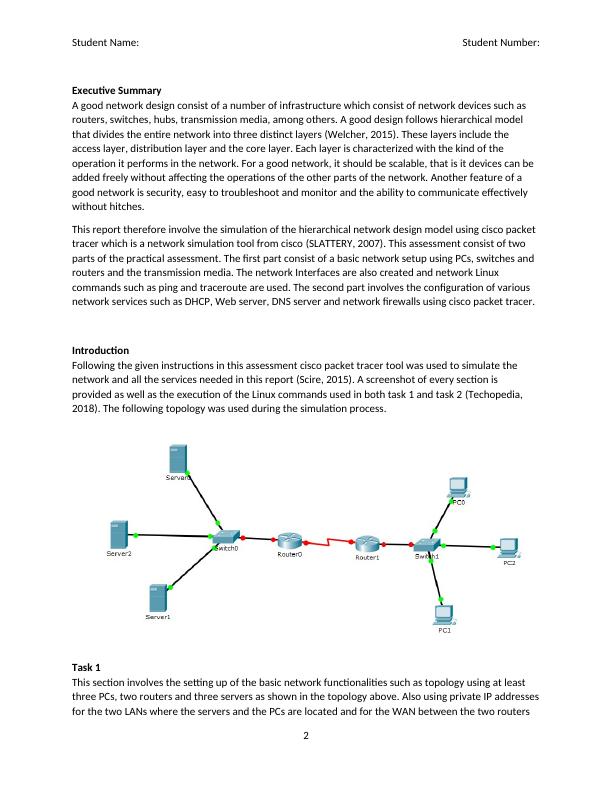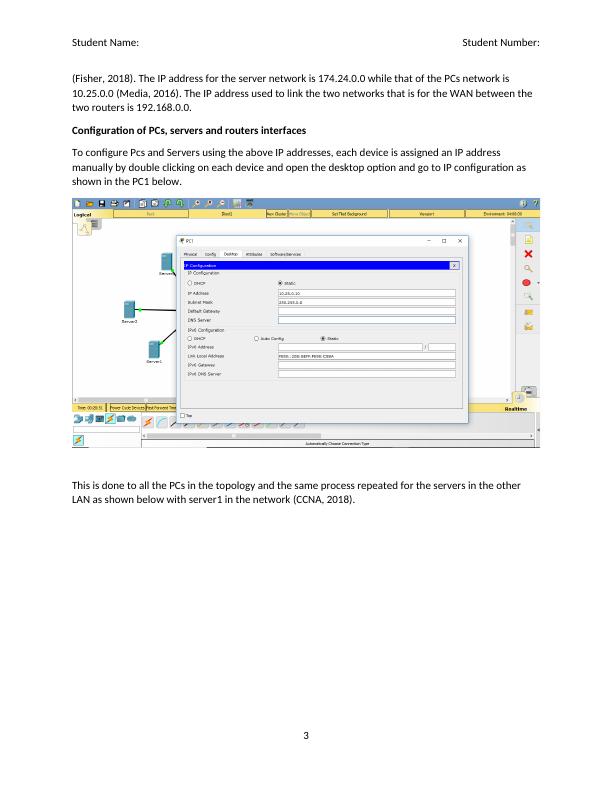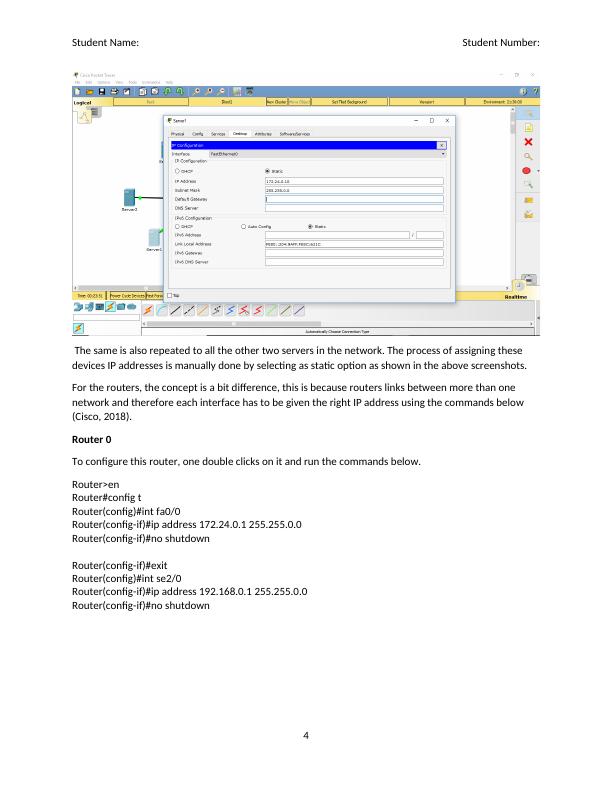Simulation of Hierarchical Network Design Model using Cisco Packet Tracer
17 Pages1921 Words277 Views
Added on 2023-06-11
About This Document
This report covers the simulation of the hierarchical network design model using Cisco Packet Tracer. It includes the configuration of various network services such as DHCP, Web server, DNS server and network firewalls using Cisco Packet Tracer. The report also covers the topology setup, interface configuration, IP routing configuration, and the use of Linux commands such as ping and traceroute. The report concludes that using Cisco Packet Tracer, it is possible to simulate the hierarchical network model by configuring various networking features such as topology, DHCP, DNS, firewall and Web services.
Simulation of Hierarchical Network Design Model using Cisco Packet Tracer
Added on 2023-06-11
ShareRelated Documents
End of preview
Want to access all the pages? Upload your documents or become a member.
A Range of Approaches for Network Designing in Assessment 4
|4
|862
|101
Networking - Microsoft Visio | Document
|6
|795
|23
Case Study of on Network Designing and Troubleshooting | Report
|17
|3617
|17
Networking Analysis and Design Using Cisco Packet Tracer
|55
|7231
|108
Internetworking with Tcp Ip Report
|36
|1787
|33
Selecting a WAN Link and Debugging
|20
|1398
|35




